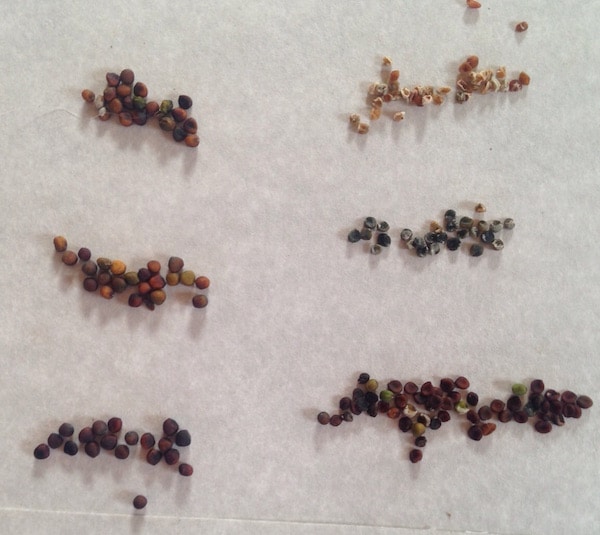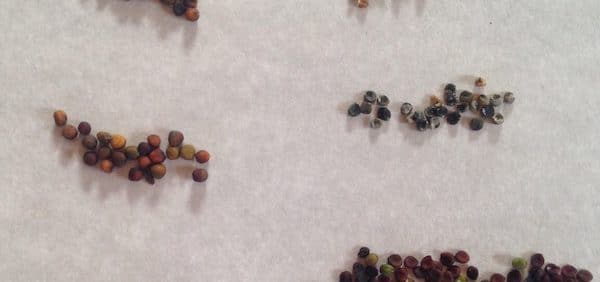Reseeding looked like the right idea in many areas throughout the summer, but the real test is at harvest. If there was no risk of frost and the significant loss of grade and yield that results, we’d have a lot more canola go in after the soils reached 10°C and the spring frost risk was essentially over. Those are the better conditions for rapid and even emergence — as many reseeded crops demonstrated.
However, the fact remains that canola seeded in May (especially early May) yields better than canola seeded in late May and June most years. And with the frost risk, early-seeded canola will have a much lower green-seed risk. Frost locks in green.

The photo above shows the difference early seeding can make when it comes to harvest quality. These seeds are from canola plants hit with a long-duration -1°C frost in late August. Seeds on the left are from low, mid and high pods from a crop that was about 10 days ahead of the reseeded crop that produced the seeds on the right. Even if the reseeded crop looked better all year long, most of those seeds will not end up in the combine. They will have dried up and blown out with the chaff.
This is not the situation for very many reseeded fields this fall. Many of them matured nicely and reached maturity (even if not full seed colour change) before frost hit.
Growers who left “iffy” canola stands were often pleasantly surprised by the crop’s ability to compensate for very low plant counts. Sure, these thin stands raise the stress level and often require increased pest management inputs. They also mature later and yield less than dense stands. But an even crop of only 2 plants per square foot can yield 90% of a crop with the target 7 to 10 plants per square foot.
Take time this harvest to review the decision making process around reseeding, compare yield and quality for thin original stands versus reseeded stand, and give each a complete economic analysis, including input costs for the thin stand and reseed costs. Finally, consider improvements to the original seeding timing and process. For growers who reseeded, could the original stand have been saved with more precision at seeding?
Further reading:
Help for the reseeding decision: Scenarios
June 3 article: Lots of reseeding
